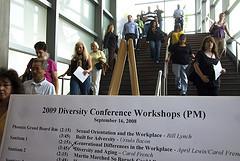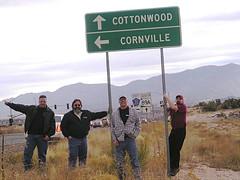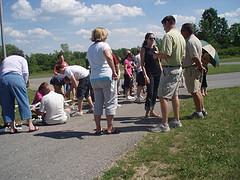Law Firm Alpha talks about protecting the rights of taxpayers. There are two legitimate ways to protect their rights: 1. administrative procedures; 2. judicial procedure. Right to appeal the ruling on the case of administrative violations carried out in accordance with Chapter 30, "Revision of decrees and decisions relating to Administrative Violations Code of Administrative Offences. Judgement in the case of administrative violation can be challenged: 1.
issued by a judge – to a higher court, 2. rendered by a collegiate body or the bailiffs – the district court at the location of a collegial body, or bailiff; 3. issued by an official – a higher authority, a superior officer or a district court where the case 4. issued by any body established in accordance with the law of the Russian Federation – in District Court at the place of the hearing. If the complaint is against a decision in the case of an administrative offense came together in court and to the parent body, the higher official, is considering a complaint court. Judgement in the case of administrative violation committed by a legal entity or individual entrepreneur may be appealed to the Court of Arbitration. If you decide to appeal the ruling on administrative liability, please note the following: 1. Complaint is filed the judge, body, or official that issued the order on the case.
They are required within three days from the date of receipt complaint send it with the case materials to the appropriate court, the parent body, the superior officer. However, the complaint may be filed directly in court, the parent body, the superior officer authorized to consider it. 2. If you are appealing the judge's ruling on administrative punishment in the form of administrative detention, remember that it should be sent to a higher court on the day of receipt complaint.
 How many times have you heard say, "I have so many balls in the air, I do not know how I can keep track of them all." We might manage to keep the balls in motion, but how good our performance is really juggle? Are our movements controlled and rhythmic? Or are we merely gritting his teeth and hoping to catch the ball next before falling on the floor? I was recently talking with a colleague (we'll call Craig), which is a great achievement-oriented and well-regarded senior management. He was overwhelmed by the amount was on your plate. In addition to handling high-pressure career that had begun to pursue a bachelor's degree while he was enrolled in another certificate program. In addition, several projects in the home were also competing for your attention. Amid all this, Craig said he hoped to continue to stick with the graduate degree, despite the workload was more than he had expected. To do otherwise would be to persevere so out of character that was inconceivable to him. In the words of Craig, "would resign." As we talked, I asked Craig if he could have a more positive way of looking at options before him. Instead of seeing the decision not to do something like giving up? How could the decision be re-framed as choosing to meet other important goals? Such a decision can mean the election of the successful completion of a few key objectives, rather than fight to keep all the balls in motion.
How many times have you heard say, "I have so many balls in the air, I do not know how I can keep track of them all." We might manage to keep the balls in motion, but how good our performance is really juggle? Are our movements controlled and rhythmic? Or are we merely gritting his teeth and hoping to catch the ball next before falling on the floor? I was recently talking with a colleague (we'll call Craig), which is a great achievement-oriented and well-regarded senior management. He was overwhelmed by the amount was on your plate. In addition to handling high-pressure career that had begun to pursue a bachelor's degree while he was enrolled in another certificate program. In addition, several projects in the home were also competing for your attention. Amid all this, Craig said he hoped to continue to stick with the graduate degree, despite the workload was more than he had expected. To do otherwise would be to persevere so out of character that was inconceivable to him. In the words of Craig, "would resign." As we talked, I asked Craig if he could have a more positive way of looking at options before him. Instead of seeing the decision not to do something like giving up? How could the decision be re-framed as choosing to meet other important goals? Such a decision can mean the election of the successful completion of a few key objectives, rather than fight to keep all the balls in motion. It has guidelines and contribute to the integration of activities and visions, helping to accommodate the diversity inherent in any organization, but at the same time valuing and recognizing the experience, authority, capacity and expertise of each and, e) Learning is encouraged Collaborative, ie learning the skills of reasoning that allows people to understand, analyze, evaluate, synthesize and apply the information they handle, (Gairin, 2000). The implementation of these four axioms, the organization promotes the development of tangible activities: new ideas, innovations in programming, new management and supervisory methods and tools to change the way people perform their work and develop an enduring capacity exchange. Coinciding with the previous approach, says Diaz (2001) that organizational learning is strongly linked to organizational change, in this sense says that any change or modification due to the construction of new knowledge, culture, values, the members that make up an organization. In the same vein, Picon (1994) argues that organizational learning is related to: “Any changes to some extent the theory of action of the organization performing relatively persistent” (p. 55). Understanding that the theory of action has to do with thought-action relationship and in this sense, sees man as a being who designs his actions, implements and evaluates its consequences when adopting their designs meet their intentions consequences and modify or try to change them when you are adverse outcomes. Only if the theory of action of the organization is changed in any of its components, you can mention that the organization has learned.
It has guidelines and contribute to the integration of activities and visions, helping to accommodate the diversity inherent in any organization, but at the same time valuing and recognizing the experience, authority, capacity and expertise of each and, e) Learning is encouraged Collaborative, ie learning the skills of reasoning that allows people to understand, analyze, evaluate, synthesize and apply the information they handle, (Gairin, 2000). The implementation of these four axioms, the organization promotes the development of tangible activities: new ideas, innovations in programming, new management and supervisory methods and tools to change the way people perform their work and develop an enduring capacity exchange. Coinciding with the previous approach, says Diaz (2001) that organizational learning is strongly linked to organizational change, in this sense says that any change or modification due to the construction of new knowledge, culture, values, the members that make up an organization. In the same vein, Picon (1994) argues that organizational learning is related to: “Any changes to some extent the theory of action of the organization performing relatively persistent” (p. 55). Understanding that the theory of action has to do with thought-action relationship and in this sense, sees man as a being who designs his actions, implements and evaluates its consequences when adopting their designs meet their intentions consequences and modify or try to change them when you are adverse outcomes. Only if the theory of action of the organization is changed in any of its components, you can mention that the organization has learned. In other words, a fad, something that people in organizations seem to use, but often not used. This is one of the reasons for the failure of many initiatives in enterprises. To introduce something without considering that it is feasible to generate rejection by cultural differences and, therefore, without providing the necessary actions to reduce the level of rejection. Teamwork is a management method, and if understood as such, with the difficulties and the advantages, can be a substantive tool for continuous quality improvement. The contribution of teamwork is key to improving the internal and external quality as long as properly defining the limits and scope about what we mean by quality and equipment, and how to achieve
In other words, a fad, something that people in organizations seem to use, but often not used. This is one of the reasons for the failure of many initiatives in enterprises. To introduce something without considering that it is feasible to generate rejection by cultural differences and, therefore, without providing the necessary actions to reduce the level of rejection. Teamwork is a management method, and if understood as such, with the difficulties and the advantages, can be a substantive tool for continuous quality improvement. The contribution of teamwork is key to improving the internal and external quality as long as properly defining the limits and scope about what we mean by quality and equipment, and how to achieve  Finally, the author raises, which Organizational Learning everything happens first as a learning process, and then integrated into a gestalt of the group. For its part Senge (1992), led to a theory of Organizational Learning, by relating the current humanistic management, general systems theory and information theory. He defines learning organizations as a social activity where knowledge and skills are implemented, they are criticized and are integrated as opportunities to optimize learning and effectiveness in the workplace. At the same time raises, that the learning organization people can not stop learning because learning is part of the fabric of everyday life.
Finally, the author raises, which Organizational Learning everything happens first as a learning process, and then integrated into a gestalt of the group. For its part Senge (1992), led to a theory of Organizational Learning, by relating the current humanistic management, general systems theory and information theory. He defines learning organizations as a social activity where knowledge and skills are implemented, they are criticized and are integrated as opportunities to optimize learning and effectiveness in the workplace. At the same time raises, that the learning organization people can not stop learning because learning is part of the fabric of everyday life.  In the specific case of the companies we are concerned, these actors need reliable than those involving skills to operate, produce efficiently, ensuring not only survival but development, achievement and permanence of the market. What really are the skills? What is involved? Why its importance, scope, impact? It is true that states that a company decides to accept work for Powers, must work systematically to identify the competencies required by their staff, since it is almost impossible to make use of skill sets developed by other organizations. Although you can make use of the lists of generic competencies developed by different authors, the organization released no additional work to adapt and disseminate among staff, because in fact, is creating a new way of perceiving the work itself .
In the specific case of the companies we are concerned, these actors need reliable than those involving skills to operate, produce efficiently, ensuring not only survival but development, achievement and permanence of the market. What really are the skills? What is involved? Why its importance, scope, impact? It is true that states that a company decides to accept work for Powers, must work systematically to identify the competencies required by their staff, since it is almost impossible to make use of skill sets developed by other organizations. Although you can make use of the lists of generic competencies developed by different authors, the organization released no additional work to adapt and disseminate among staff, because in fact, is creating a new way of perceiving the work itself .  The aim of the survey was to identify the factors of motivation and demotivation of the respondents and what aspects they would find useful to learn to manage. A total of 100 surveys, of which 65% were answered by women and 35% for men aged 25-45 years. The vast majority of intermediate and management positions. This is a summary of the results: Among the factors that discourage AT WORK were identified: absence or lack of clarity of goals and workplan Bad Little recognition or co-head relations with long hours and inflexible monotony does not see results Paperwork Lack of interest or commitment to professional education of persons Mala environment Customer Dissatisfaction Chaos, disorganization among the factors that motivated at work appeared this: New Challenges Teamwork Recognition Good work environment Meeting goals and see results Customer Satisfaction Satisfaction Autonomy of work well done 99% of respondents believed that gives them motivation benefits, including: Improved work performance. It helps to be more effective future perspective contributes to better face obstacles are emerging in the daily satisfaction Mayor Helps move forward and prosper is easier to go to work is reduced fatigue and better works were also asked about themes or issues that interested them learn to manage. This is the result in order of most to least important: 1) frustration 2nd) monotony 3rd) fear of failure 4) fatigue and lack of vitality 5th) anger 6th) comparisons and rivalry 7) other issues , among which are: ineffective communication, fear of public speaking, and poor time management.
The aim of the survey was to identify the factors of motivation and demotivation of the respondents and what aspects they would find useful to learn to manage. A total of 100 surveys, of which 65% were answered by women and 35% for men aged 25-45 years. The vast majority of intermediate and management positions. This is a summary of the results: Among the factors that discourage AT WORK were identified: absence or lack of clarity of goals and workplan Bad Little recognition or co-head relations with long hours and inflexible monotony does not see results Paperwork Lack of interest or commitment to professional education of persons Mala environment Customer Dissatisfaction Chaos, disorganization among the factors that motivated at work appeared this: New Challenges Teamwork Recognition Good work environment Meeting goals and see results Customer Satisfaction Satisfaction Autonomy of work well done 99% of respondents believed that gives them motivation benefits, including: Improved work performance. It helps to be more effective future perspective contributes to better face obstacles are emerging in the daily satisfaction Mayor Helps move forward and prosper is easier to go to work is reduced fatigue and better works were also asked about themes or issues that interested them learn to manage. This is the result in order of most to least important: 1) frustration 2nd) monotony 3rd) fear of failure 4) fatigue and lack of vitality 5th) anger 6th) comparisons and rivalry 7) other issues , among which are: ineffective communication, fear of public speaking, and poor time management.